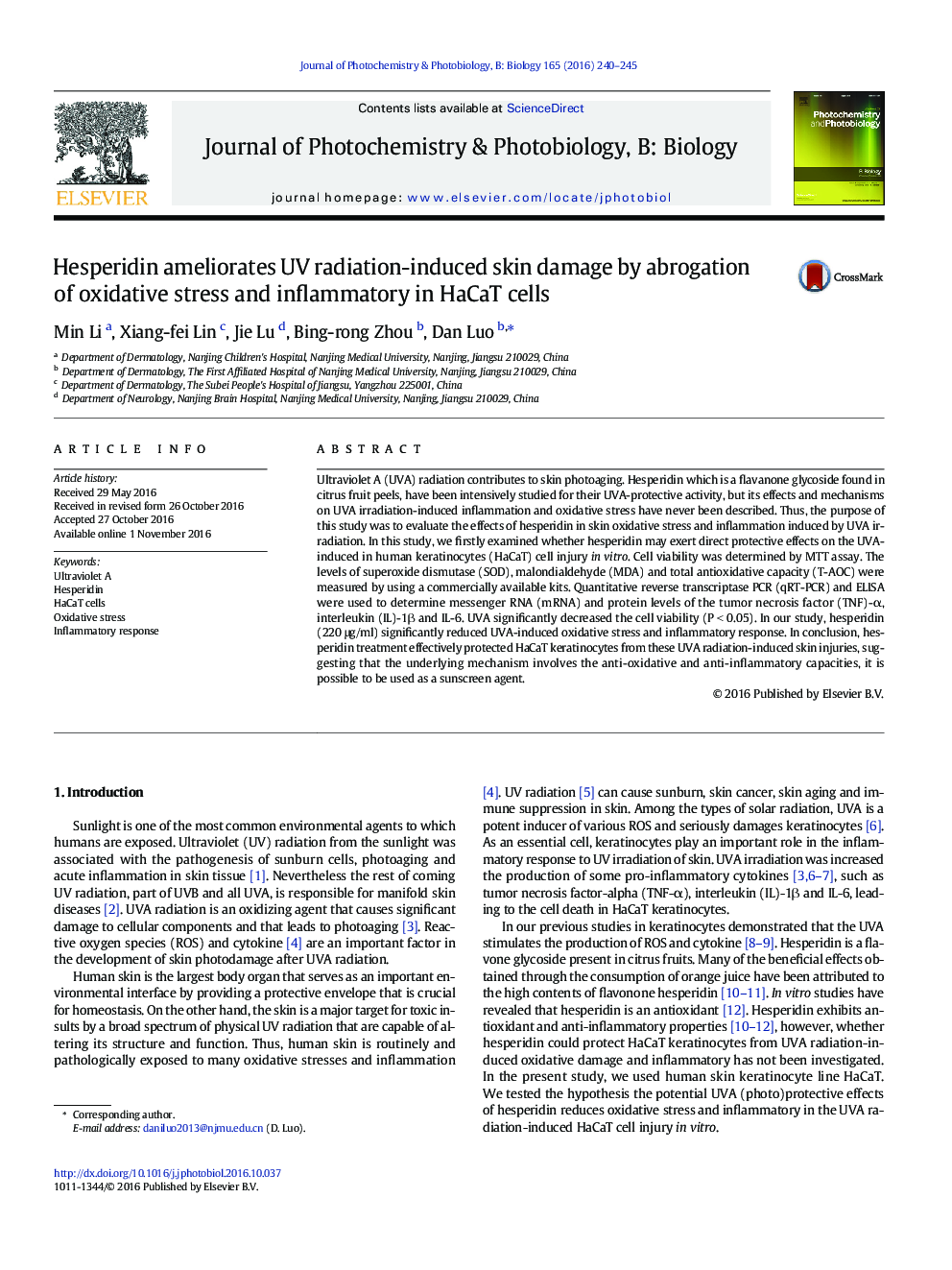| Article ID | Journal | Published Year | Pages | File Type |
|---|---|---|---|---|
| 6452598 | Journal of Photochemistry and Photobiology B: Biology | 2016 | 6 Pages |
â¢Hesperidin reduced the generation of oxidative products and enhanced antioxidative activity.â¢Hesperidin significantly reduced the TNF-α, IL-1β and IL-6 expression.â¢Hesperidin effectively protected HaCaT keratinocytes from the UVA radiation-induced skin injury.
Ultraviolet A (UVA) radiation contributes to skin photoaging. Hesperidin which is a flavanone glycoside found in citrus fruit peels, have been intensively studied for their UVA-protective activity, but its effects and mechanisms on UVA irradiation-induced inflammation and oxidative stress have never been described. Thus, the purpose of this study was to evaluate the effects of hesperidin in skin oxidative stress and inflammation induced by UVA irradiation. In this study, we firstly examined whether hesperidin may exert direct protective effects on the UVA-induced in human keratinocytes (HaCaT) cell injury in vitro. Cell viability was determined by MTT assay. The levels of superoxide dismutase (SOD), malondialdehyde (MDA) and total antioxidative capacity (T-AOC) were measured by using a commercially available kits. Quantitative reverse transcriptase PCR (qRT-PCR) and ELISA were used to determine messenger RNA (mRNA) and protein levels of the tumor necrosis factor (TNF)-α, interleukin (IL)-1β and IL-6. UVA significantly decreased the cell viability (P < 0.05). In our study, hesperidin (220 μg/ml) significantly reduced UVA-induced oxidative stress and inflammatory response. In conclusion, hesperidin treatment effectively protected HaCaT keratinocytes from these UVA radiation-induced skin injuries, suggesting that the underlying mechanism involves the anti-oxidative and anti-inflammatory capacities, it is possible to be used as a sunscreen agent.
